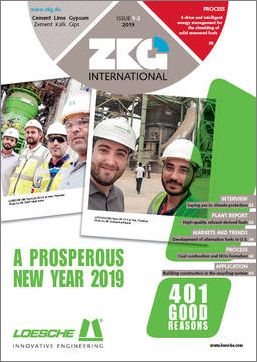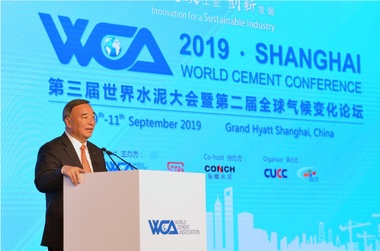Starting the new year
with climate protection
In December 2018, not only the international community met for the Climate Change Conference in Katowice/Poland. The World Cement Association (WCA) had also included the global climate on the agenda of its conference in London.
That global warming has to be limited to below 2°C – that’s something the community of nations is generally agreed on. Moreover, there is also agreement that the emission of greenhouse gases has to be drastically reduced to achieve this limit. One positive outcome of Katowice is that in future a report is to be regularly given on how the emission of greenhouse gases has developed. The individual countries are to show what they have done for climate protection. Uniform transparency rules and standards on the recording of CO2 emissions are to apply for all countries to make progress in CO2 reduction comparable. There will be no sanctions. But public pressure is mounting. Natural disasters and seas full of plastic waste are making it very plain to many people that things cannot go on this way with environmental pollution and global warming.
The cement industry is very well aware of its responsibility, and in future wants to make an even stronger commitment to CO2 reduction. The WCA has approved a “five-point plan” on this, which Bernard Mathieu, Director World Cement Association Climate Programme, has explained to us in an interview. The call for transparency plays a large part here. Besides the optimum utilization of our building materials in construction and the development of new technologies, the use of waste materials, especially as fuels to substitute fossil fuels is important.
Our first issue in the new year covers a range of topics from alternative fuels to recycling. Rick Bohan informs us about the “Development of alternative fuels in the U.S. cement industry”. Taking Irish Cement as an example, we feature “A high-performance handling line for high-quality refuse-derived fuels”. A field report presents “Intelligent energy management for the shredding of solid recovered fuels”. The recycling of construction materials will be a growing challenge for our industry. With the use of R-concrete, valuable resources can be saved. An application report from Switzerland “Concrete made with recycled aggregates” shows how this can be done.
We are all called upon to make a contribution to achieve the climate goals. That starts with managing without plastic bottles in private households and continues with the responsible use of raw materials and fuels in production plants.
In this spirit, I wish you all a successful new year. We should be pleased to report on your success story with the use of alternative raw materials and fuels in your cement plant!
Yours
Anett Fischer
Editor-in-Chief





